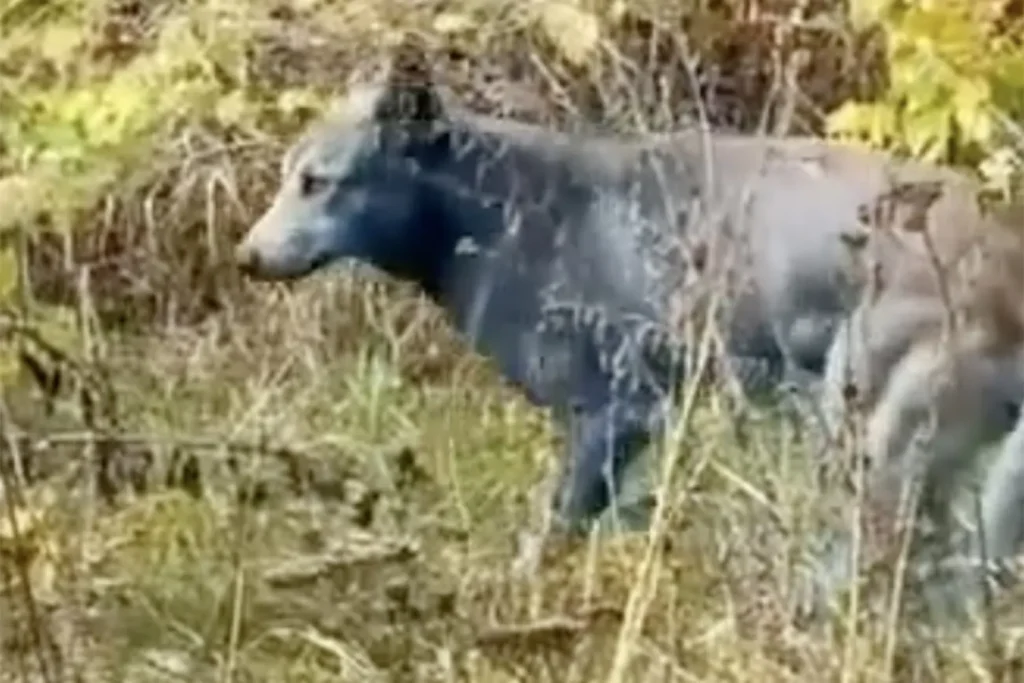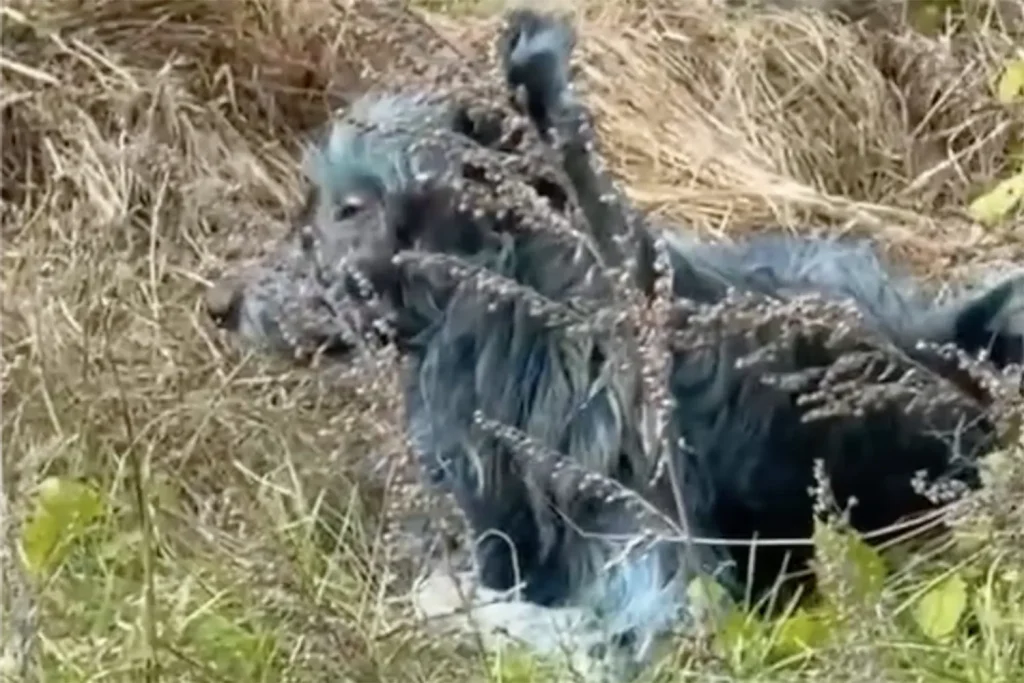Blue Dogs Spotted at the Site of the Chernobyl Nuclear Disaster — Scientists Are Trying to Discover Why Their Fur Turned Bright Blue
In the haunting silence of the Chernobyl Exclusion Zone, where nature has slowly reclaimed what humanity abandoned decades ago, a strange and almost surreal sight has captured global attention. A pack of dogs — their fur tinted with shades of blue — has been spotted roaming the ruins of one of the most radioactive places on Earth. The images, shared by the organization Dogs of Chernobyl, have gone viral, sparking both fascination and concern across the world.

Earlier this month, the non-profit group affiliated with Clean Futures Fund shared photographs on Instagram showing several stray dogs near the Chernobyl site, their coats appearing bright blue under the autumn light. The organization, which has spent years caring for and studying the hundreds of stray animals living in the restricted area, said they have yet to determine what caused the unusual color. “We were unable to catch them yet,” the group explained in a statement. “Catching them will help us understand exactly why their fur is blue.”
The images have stirred questions and theories. Were the dogs exposed to radiation? Did they roll in some kind of chemical residue? Or is it something as simple as industrial pigment from abandoned facilities nearby? Chernobyl’s exclusion zone, still largely uninhabited by humans since the 1986 nuclear disaster, remains filled with decaying factories, rusted machinery, and contaminated soil — making it difficult to know what environmental factors might still be at play.

The non-profit Clean Futures Fund, which operates Dogs of Chernobyl, has been working in the region since 2017. Their mission is to monitor, vaccinate, and provide care for the estimated 700 stray dogs that live within the Exclusion Zone. Many of these animals are descendants of pets left behind when families were evacuated during the explosion of Reactor 4 at the Chernobyl Nuclear Power Plant nearly four decades ago. While generations have passed, their story continues — one of survival, resilience, and adaptation in one of the world’s most dangerous landscapes.
Experts caution against jumping to conclusions about the dogs’ blue coloring. While the region remains radioactive, there’s no clear evidence that the color of their fur is related to radiation exposure. In fact, many believe it’s more likely the result of environmental contamination, perhaps from oxidized metals, paint powder, or old industrial chemicals scattered across the area. Still, until the dogs are captured and tested, the true cause remains a mystery.

What’s certain, though, is the deep emotional response these photos have sparked. Seeing animals thrive, even in the shadows of one of history’s worst nuclear disasters, is both heartbreaking and inspiring. The dogs — often filmed running through overgrown streets and empty buildings — have become living symbols of how life endures despite devastation. Volunteers regularly enter the Exclusion Zone to bring food, administer vaccines, and monitor the dogs’ health, documenting each encounter with compassion and care.
For the volunteers of Dogs of Chernobyl, the blue dogs represent more than just a biological curiosity — they are a reminder of how human impact lingers long after disaster. The organization continues to seek funding and support to expand their operations, as caring for the hundreds of animals still trapped in the area is a continuous challenge. Each animal they treat helps scientists understand how radiation and isolation have shaped wildlife over generations.
While the mystery of the blue fur remains unsolved for now, scientists and volunteers are committed to finding answers. Whether it’s chemical staining or a unique environmental adaptation, the focus remains on ensuring the animals are safe, healthy, and protected from further harm.
As eerie as their blue coats might look, the dogs of Chernobyl carry a message of resilience. In a place once synonymous with death and destruction, life continues to fight its way back — sometimes in unexpected colors. The blue dogs are not just a viral phenomenon; they are a vivid, living testament to nature’s will to survive, even in the most impossible places.



